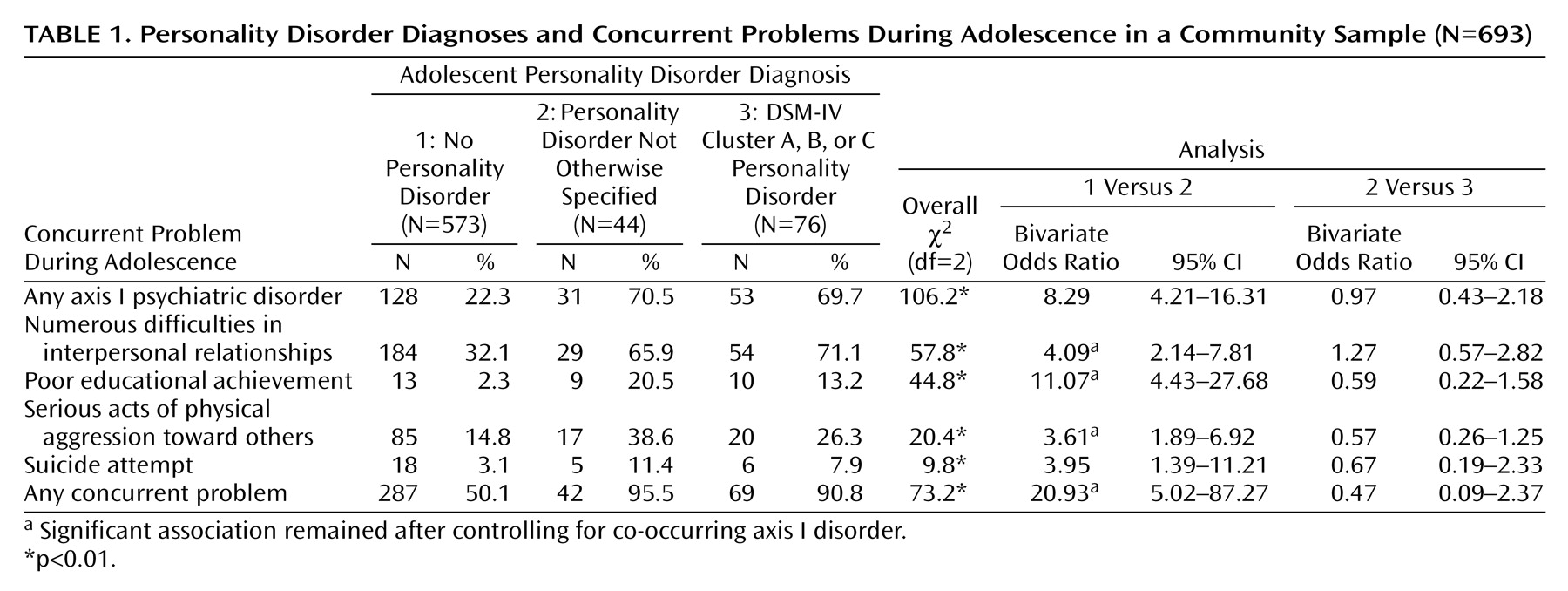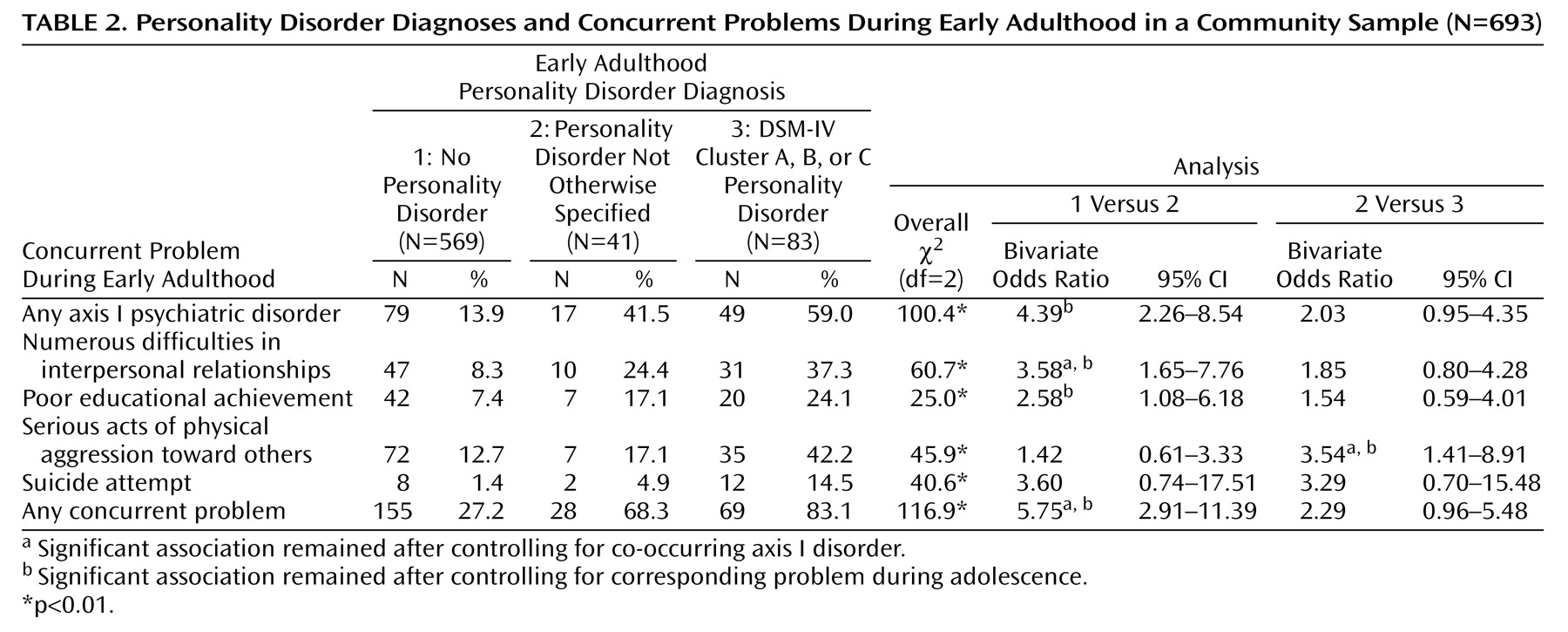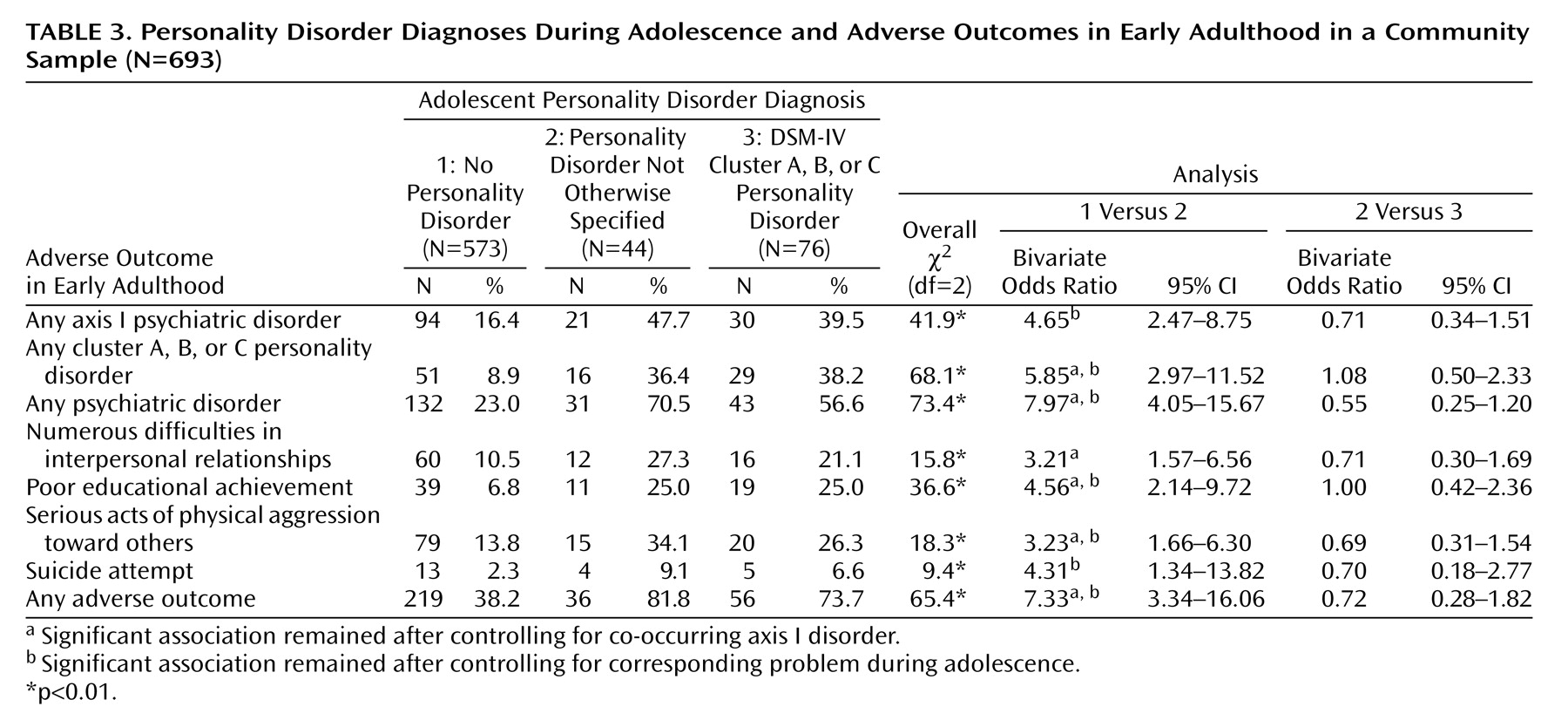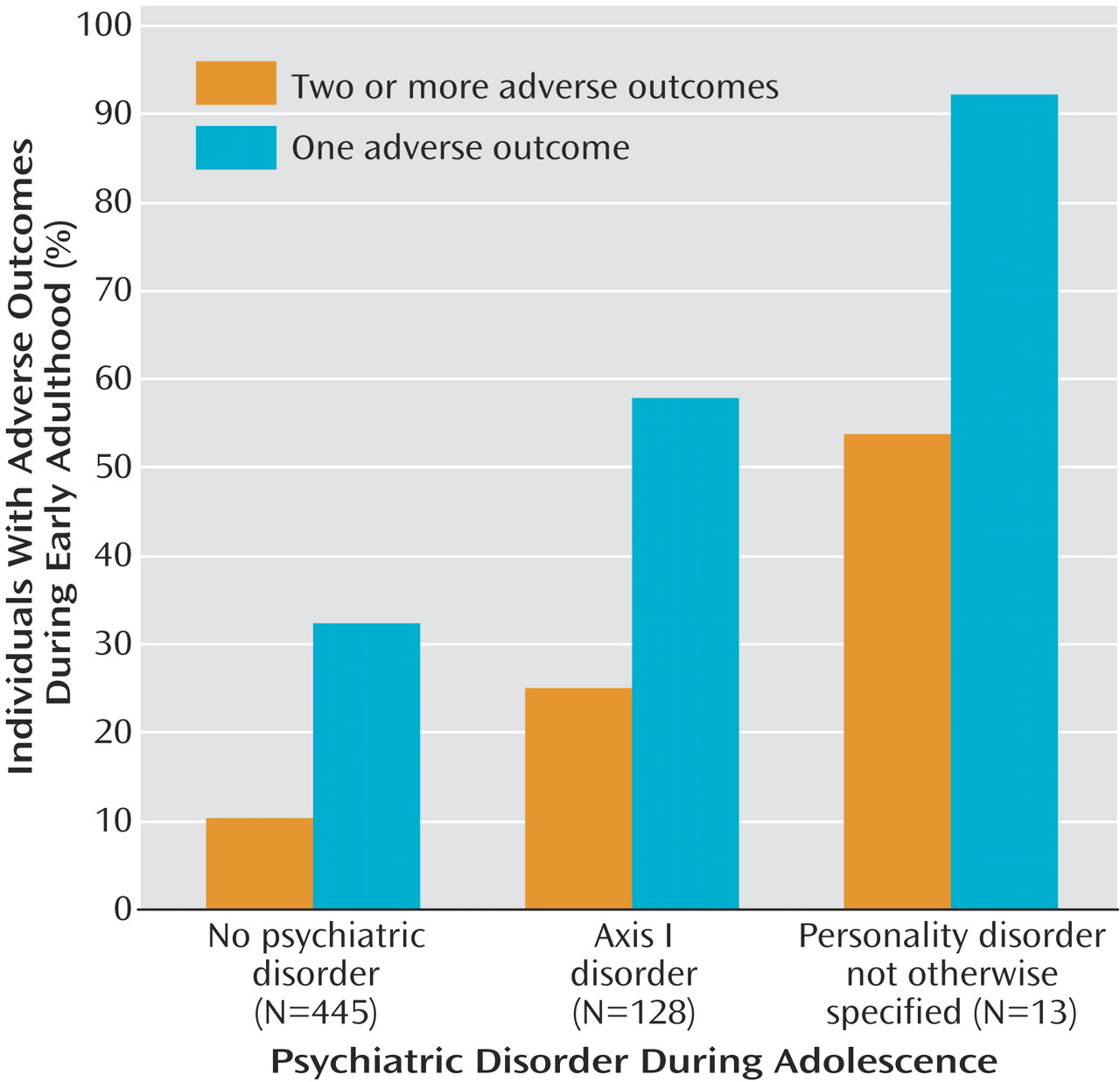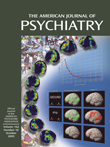Subjects and Procedure
Nine hundred seventy-six mothers of children between the ages of 1 and 10 (mean age=5.5 years, SD=2.8) were randomly sampled on the basis of residence in Albany and Saratoga Counties in the State of New York and interviewed in 1975
(21). These mothers and a randomly sampled child were interviewed in 1983 (N=778, mean offspring age=13.7 [SD=2.8]), 1985–1986 (N=776, mean offspring age=16.3 [SD=2.8]), and 1991–1993 (N=749, mean offspring age=22.1 [SD=2.7]). These families were demographically representative of families in the sampled region
(22). The findings in the present report are based on data from 693 families that were interviewed during the offspring’s adolescence and early adulthood. These families did not differ from the remainder of the baseline sample with regard to the prevalence of maternal or offspring behavioral or emotional problems; paternal substance abuse was less prevalent. The study procedures have been approved by the Columbia University and New York State Psychiatric Institute institutional review boards. Written informed consent or assent was obtained from all participants after the interview procedures were fully explained. The mothers and offspring were interviewed separately by extensively trained and supervised lay interviewers. Additional information regarding the methodology is available from previous reports
(21–
23) and on the study web site (http://nyspi.org/childcom).
A stratified random sampling procedure was used in 1975 to obtain a representative sample of families living in Albany and Saratoga counties. Census data were used to create primary sampling units for these counties. The primary sampling units were stratified by urban/rural status, ethnicity, and median income. A systematic sample of primary sampling units in each county was then drawn with probability proportional to the number of households and probabilities equal for members of all strata. Households with at least one child between the ages of 1 and 10 years were qualified for the study. Address lists were compiled, and interviewers were sent to the selected addresses. A total of 1,141 families were invited to participate in the study, and 976 families (85.5%) were interviewed in 1975; 724 (74.2%) of these families were reinterviewed in 1983. A supplementary sample of 54 families were randomly sampled from urban poverty areas and interviewed in 1983 to improve the representativeness of the sample. This brought the total families interviewed in 1983 to 778. Seven hundred seventy-six families, comprising 690 (88.7%) of the families interviewed in 1983 and 86 families who had been interviewed in 1975 but not in 1983, were interviewed in 1985–1986. Seven hundred forty-nine families, comprising 657 (84.4%) of the families interviewed in 1983 and 92 families who had been interviewed in 1975 but not in 1983, were interviewed in 1991–1993.
Assessment of Psychiatric Disorders
The parent and youth versions of the Diagnostic Interview Schedule for Children
(24) were administered during the childhood and adolescence of the offspring to assess anxiety (agoraphobia, social phobia, generalized anxiety disorder, obsessive-compulsive disorder, panic disorder, and separation anxiety disorder), disruptive disorders (attention deficit, conduct, and oppositional defiant disorders), eating disorders (anorexia nervosa, bulimia nervosa), mood disorders (dysthymic and major depressive disorders), and substance use disorders (alcohol and drug abuse/dependence). An age-appropriate version of the Diagnostic Interview Schedule for Children was administered to the offspring during early adulthood. The reliability and validity of the Diagnostic Interview Schedule for Children as employed in this study are comparable to those of other structured interviews
(25).
Interview items used to assess personality disorders were drawn from the Personality Diagnostic Questionnaire
(26), the Structured Clinical Interview for DSM-III-R Personality Disorders
(27), the Diagnostic Interview Schedule for Children, and the Disorganizing Poverty Interview
(21). Items were originally selected on the basis of correspondence with DSM-III-R criteria and combined using algorithms developed by consensus among one psychiatrist and two clinical psychologists
(8). Following the publication of DSM-IV, items from the study protocol that had been administered were added to the algorithms to maximize correspondence with DSM-IV, most notably to assess depressive personality disorder.
Thirty-one maternal interview items and 116 offspring interview items assessed DSM-IV personality disorder criteria (i.e., “personality disorder symptoms”). Ratings of the behavior and appearance of the study offspring (five items) were completed by the interviewers. Personality disorder symptoms were considered present if reported by any informant. Cluster A, B, C, depressive, and passive-aggressive personality disorders were identified as present if DSM-IV criteria thresholds were met during early adulthood. However, because personality disorder symptoms must be persistent in order for an adolescent to be diagnosed with a personality disorder, cluster A, B, C, depressive, and passive-aggressive personality disorders were only diagnosed during adolescence if DSM-IV criteria were met during both adolescent assessments or if the criteria were met at one assessment and the personality disorder symptom level was within one criterion of the diagnosis at the other assessment. In accordance with DSM-IV criteria, antisocial personality disorder was assessed among individuals with a history of conduct disorder who were ≥18 years of age. Consistent with DSM-IV criteria, personality disorder not otherwise specified was identified as being present (among individuals who did not have cluster A, B, or C personality disorders) if the number of personality disorder criteria identified as being present came within one criterion of meeting the threshold for two or more specific personality disorders or if criteria were met for depressive personality disorder or passive-aggressive personality disorder.
Research has supported the reliability and validity of the items and algorithms used to assess personality disorders. Personality disorder symptoms, assessed by using these items and algorithms, were moderately stable during adolescence and early adulthood, and the stability of personality disorder symptoms was similar to the stability of personality disorder symptoms in adult studies that have used similar test-retest intervals
(23). Personality disorder prevalence during adolescence (10.97%) and early adulthood (11.98%) was within the range of prevalence estimates that have been obtained in adult community samples
(5). The validity of the items and algorithms was supported by findings indicating that adolescent personality disorders were associated with elevated risk for axis I psychiatric disorders, criminal or violent behavior, and suicidal behavior during early adulthood
(6,
7).
Assessment of Educational Achievement, Interpersonal Difficulties, and Aggression
One Diagnostic Interview Schedule for Children module assessed educational problems: attention difficulties, failure to complete homework, lack of interest in schoolwork, negative attitudes about school, and poor teacher evaluations. Poor educational achievement was considered present if the individual failed to complete secondary school by age 18 or if he or she was ≥1 year behind his or her peers in school. Another Diagnostic Interview Schedule for Children module assessed acts of physical aggression. The following interpersonal difficulties were assessed during the maternal and offspring interviews: cruelty toward peers, difficulty making friends, frequent arguments with adults or peers, loneliness and interpersonal isolation, lack of close friends, poor relationships with friends or peers, refusal to share with others, and fights with family members.
